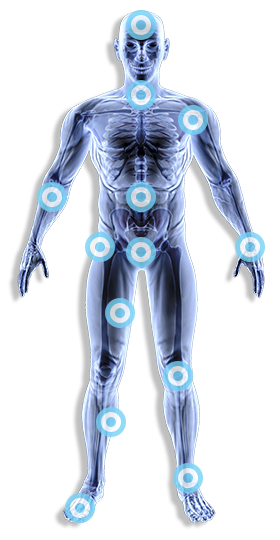Tennis Elbow
Sports people and manual workers commonly complain of pain on the outside aspect of the elbow, commonly due to repetitive wrist extension activities. This condition is traditionally labelled “tennis elbow”.
Pain is caused by the scarring, thickening and tightening of one of the wrist extensor tendons that attaches just below the outside aspect of the elbow joint.
Other potential causes of pain on the outer aspect of the elbow are synovitis, bursitis, or a trapped nerve. All of these can exist on their own or in conjunction with tennis elbow. Wrist extensors, those muscles that predominantly lift your wrist upwards, can with repetitive action and can result in the inflammation, break town in the tissue of the common extensor tendon of the wrist where it attaches at the outside of the elbow (lateral epicondyle).
Golfers Elbow
A similar condition may also affect the inside aspect of the elbow and is commonly labelled as “golfers elbow”. This condition is also of an overuse nature as with tennis elbow but affects the wrist flexor tendons.
There are many other activities that can result in Golfer’s Elbow such as working out at the gym or simply working in front of a computer for prolonged periods. Each of these activities use the same muscles (wrist flexors and forearm pronators) repetitively and can result in the inflammation of common flexor tendon of the wrist where it attaches at the inside of the elbow (medial epicondyle).
The causes of Golfer’s Elbow are similar to tennis elbow but pain and tenderness are felt on the inside (medial) of the elbow, on or around the joint’s bony prominence.
What are the symptoms of Golfer’s Elbow?
Symptoms include tenderness and pain at the medial epicondyle, made worse by resisted flexing of the wrist and forearm pronation . The pain may spread down the forearm.
Activities that use the flexor muscles like bending the wrist or grasping can make matters worse. Sufferers find they have difficulty extending the forearm fully (because of inflamed muscles, tendons and ligaments) and the pain typically lasts for 6 to 12 weeks; but the discomfort can continue for several months or even years if not treated. Some people try to put up with this condition, the soliloquy is long term disability.
Treatment
Physio Team-Works uses a combination of treatments to resolve these frustrating and often debilitating conditions. These include massage, eccentric loading and stretching of muscles, mobilisation of nerves, mobilisation and manipulation, supportive bracing functional rehabilitation program that addresses strengthening, the correction of predisposing factors and a graduated return to activity.
If rest, anti-inflammatory medications, and a stretching routines, electrotherapy such as laser and ultrasound therapy fail to cure your elbow pain, you may have to consider injection. However, physiotherapy should always be the first treatment option, before both steroid injections. If this fails then surgery might be an option.
Once again we can arrange for you to see the best surgeon for this complaint. If surgery is performed they should always be followed with a program of physiotherapy or the problem with undoubtedly reoccur.
Injection therapy
At the Physio Team-Works clinic we have the necessary post graduate skills to administer soft tissue and joint injections. We have been providing such a service for over 8 years and we have successfully injected many hundreds of soft tissue and joint problems. We always suggest that physiotherapy is an integral part of this treatment. Without this the likelihood scenario the pain will return.
We can inject tissue when other methods have failed given the correct diagnosis and further investigation if required. We require the appropriate prescription of medicine as specified in our protocols and guidelines as recommended by the Society of Orthopaedic Medicine.
Surgery
Success of surgery depends a lot on what happens in the postoperative stages. It is important to maximise the surgery by doing exercises that help to stabilise, mobilise and protect the area. Your consultant may also recommend you have some sort of pre-operative intervention; we are ideally suited to do this.
PLP platelet rich therapy
This is a technique which is being employed by some of our associate surgeons. Torn tendons, muscles and ligaments plague athletes in many types of sports. In attempts to help heal the wounded tissue, some athletes, both amateur and professional, have turned to platelet-rich plasma (PRP) therapy.
For the treatment, doctors take a small vial of a patient’s blood, about 30 millilitres, and spin it in a centrifuge to separate the platelet-rich plasma from the other components. Then they inject the concentrated platelets at the site of the patient’s injury. In theory, the growth factors that platelets secrete (not including human growth hormone) spur tissue recovery.
Contact us
Physio Team-Works will be able to guide you through these stages of rehabilitation. We can assist in monitoring your progress, setting your goals, and providing appropriate treatment to maximise your recovery potential.
We can also inform you of how you can help your own recovery, and what should be avoided. You will be provided a specific rehabilitation programme, and we aim to back to your full levels of activity and/or sport as quickly as possible.
Call 07486 692119 or complete our quick online form to arrange an appointment.

